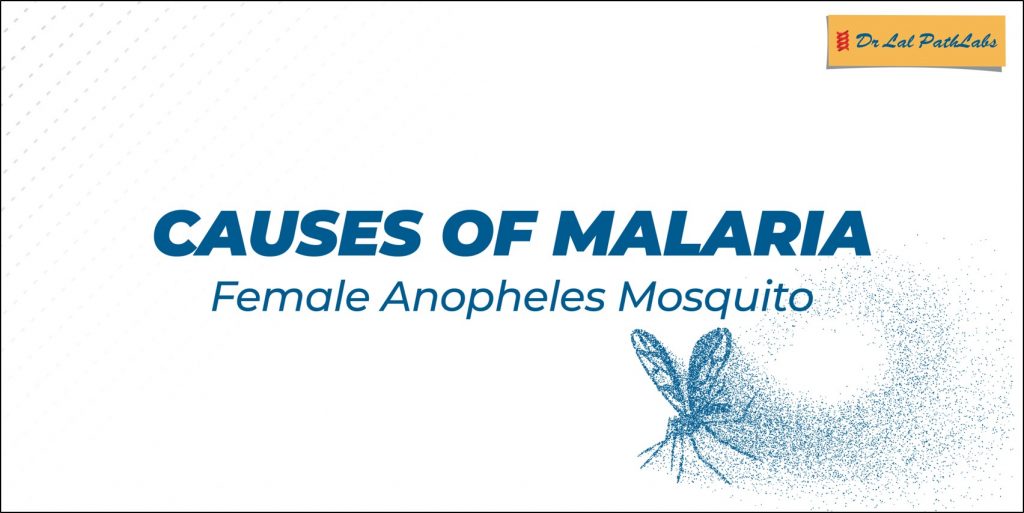Causes of Malaria
What is Malaria?
Malaria is a mosquito-borne infectious disease caused by the Plasmodium parasite. The primary mode of transmission occurs through the bites of infected female Anopheles mosquitoes. There are several species of Plasmodium that can cause malaria in humans, with Plasmodium falciparum being the most deadly and responsible for the majority of malaria-related deaths.
Types of Malaria Parasite
There are several species of Plasmodium that can cause malaria in humans, with Plasmodium falciparum, Plasmodium vivax, Plasmodium malariae, and Plasmodium ovale being the most common.
- Plasmodium falciparum: This species is the most dangerous and responsible for the majority of malaria-related deaths globally. It causes severe and potentially fatal malaria. Its symptoms include high fever, chills, and anemia.
- Plasmodium vivax: This species causes a less severe form of malaria but can still be debilitating. It can lead to relapses of the disease as the parasite can remain dormant in the liver for long periods of time. Symptoms include fever, chills, headache, and fatigue. P. vivax is found in many parts of the world, including Asia, Latin America, and the Middle East.
- Plasmodium malariae: Infections with P. malariae tend to be less severe and can even be asymptomatic. However, the parasite can remain in the bloodstream for long periods of time. Symptoms are similar to other forms of malaria but can have a slower onset.
- Plasmodium ovale: This species is similar to P. vivax and can also lead to relapses of the disease due to liver-stage parasites. Symptoms are generally milder and can include fever and chills. P. ovale is mainly found in certain parts of Africa.
- Plasmodium knowlesi: While not as common, this species of Plasmodium can infect humans and is usually found in certain parts of Southeast Asia. It’s primarily a parasite of macaque monkeys, but it can infect humans and cause a severe form of malaria.
Each species of Plasmodium has slightly different characteristics in terms of its life cycle, symptoms, geographic distribution, and treatment response.
Transmission of Malaria
Here’s how malaria is transmitted in humans:
- Mosquito Transmission: When an Anopheles mosquito feeds on a person infected with Plasmodium by drawing blood, it ingests the parasite along with the blood. Inside the mosquito, the parasites undergo a complex series of transformations, eventually reaching the stage where they can infect humans.
- Human Infection: When an infected mosquito subsequently bites a human, it injects the Plasmodium parasites into the person’s bloodstream. These parasites then travel to the liver, where they multiply and develop further.
- Release into Bloodstream: After maturing in the liver, the parasites are released into the bloodstream. They infect red blood cells and continue to multiply.
- Symptoms: As the infected red blood cells rupture and release more parasites, the person experiences symptoms of malaria. These symptoms can include:
- Fever
- Chills
- Sweats
- Headache
- Muscle aches
- Fatigue
- Cycle Continuation: The cycle continues as more mosquitoes bite the infected person, becoming carriers of the parasite themselves, and the cycle of transmission continues when these mosquitoes bite new individuals.
Several factors contribute to the spread of malaria:
- Mosquito Habitats: Anopheles mosquitoes thrive in warm and humid environments. Stagnant water, such as in puddles, ponds, and marshes, provides ideal breeding grounds for these mosquitoes.
- Lack of Effective Control Measures: In areas with inadequate healthcare infrastructure, limited access to effective antimalarial drugs, and insufficient mosquito control efforts, the transmission of malaria can become more widespread.
- Resistance to Drugs and Insecticides: Over time, the Plasmodium parasite and mosquito vectors have developed resistance to certain antimalarial drugs and insecticides, making control efforts more challenging.
- Global Travel and Migration: Malaria can be transported to new regions through infected individuals travelling from endemic areas to non-endemic areas.
- Climate Conditions: Changes in climate, such as increased temperatures and altered precipitation patterns, can affect the distribution and behavior of mosquitoes, potentially expanding the areas where malaria transmission can occur.














